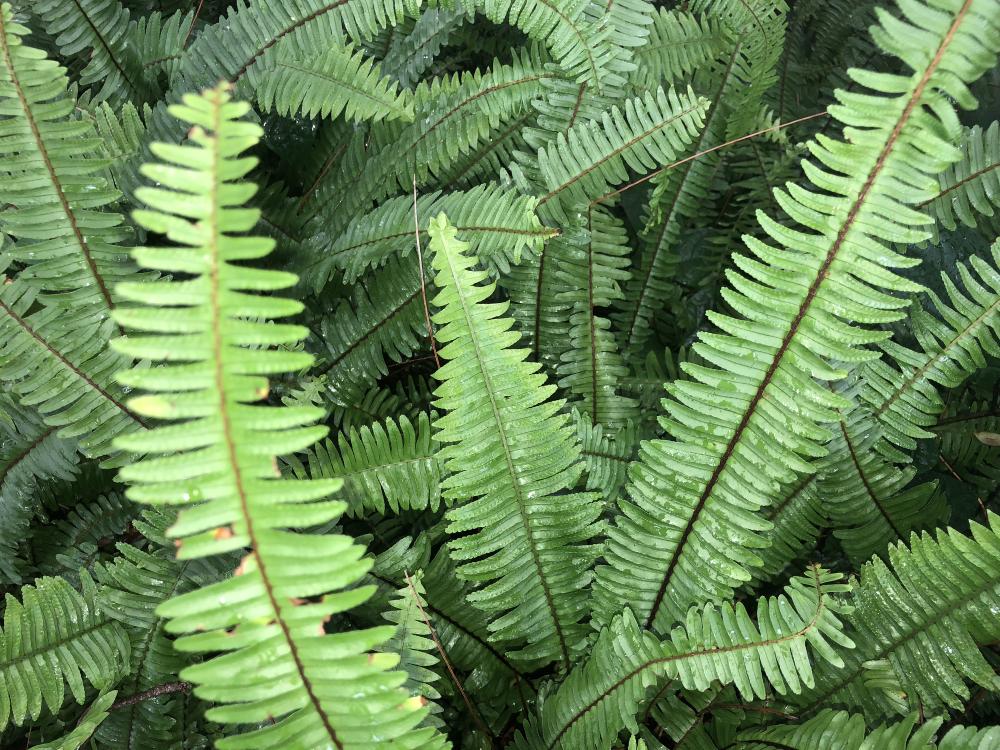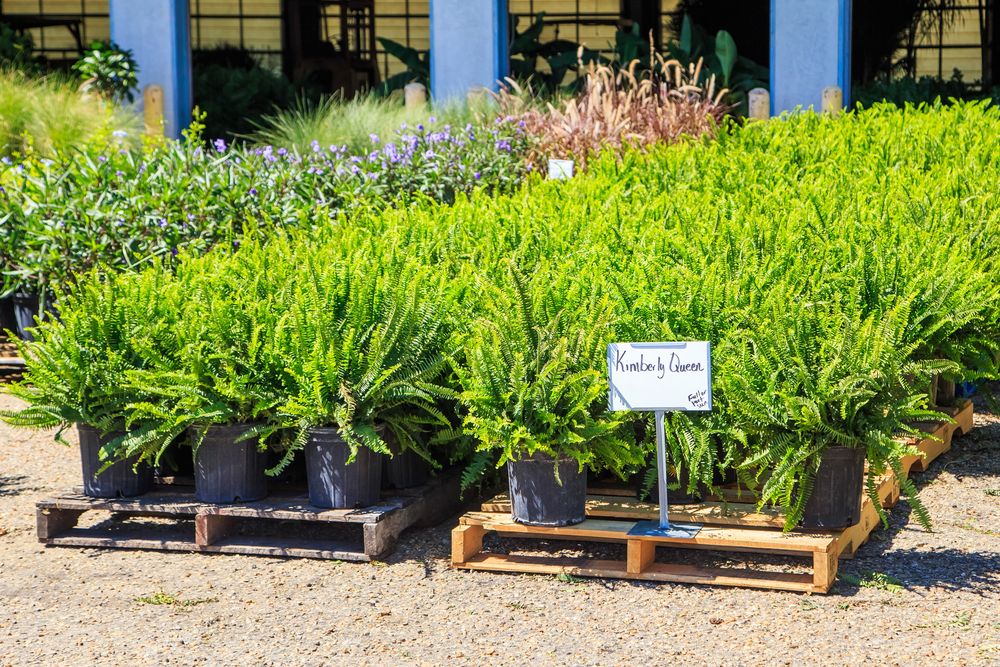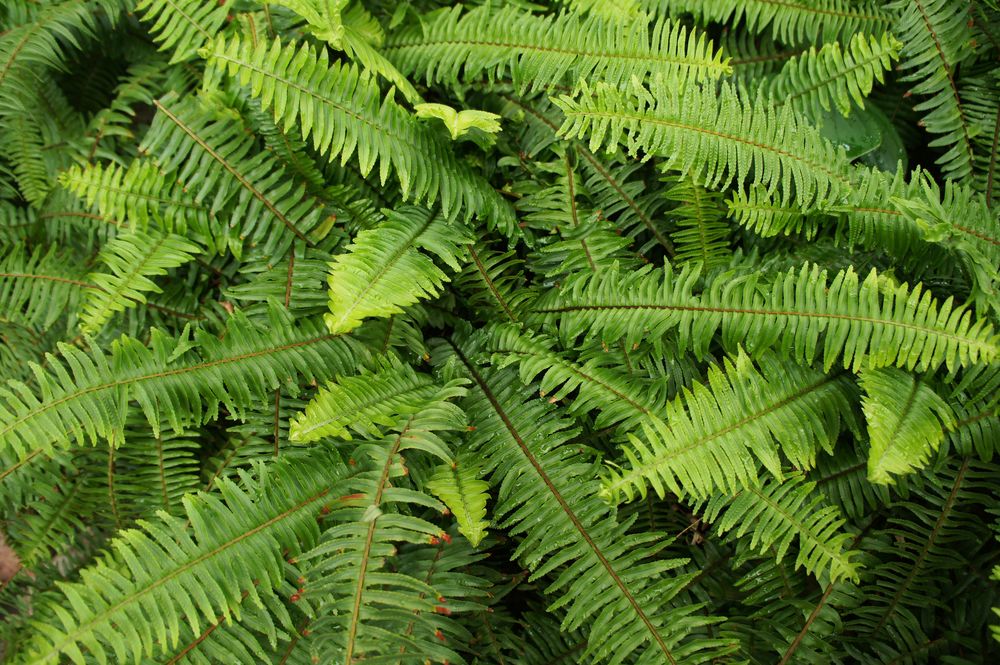Tips on Growing & Caring for Kimberley Queen Ferns
If you’re looking to grow an evergreen plant with sword-shaped ferns, the Kimberley queen fern falls nothing short of it. It matures in a bushy pattern and elongates in an upright position. For growers living in a warm region, this would be the perfect plant for an outdoor space.
They’re commonly grown inside containers so they can be overwintered indoors. Since it’s a fast grower, the Australian native has the potential to reach up to 4’ feet tall, especially when planted in the spring. Let’s check out more about growing and caring for the Kimberley queen fern.
More About Kimberley Queen Ferns
Nephrolepis obliterate, the Kimberley Queen Fern, popularly misspelled as Kimberly Queen fern is a fern in the Lomariopsidaceae family. It’s also easy to mistake it for the Staghorn fern. Also known as the sword fern, it’s generally characterized by its narrow, sword-shaped leaves and this is what makes it to be considered one of the most beautiful ferns in existence.
The leaf petioles are covered with red-brown hairs that have pale margins. These ferns mostly grow outside in warm temperatures, the adaptable Kimberley Queen Fern can be grown outdoors in the shade or partial shade and can also be grown in the cooler indoor climates as indoor plants. It’s worth noting that the plant has perennial traits and prefers to grow in moist, well-draining soil. The ideal USDA zones are from 9 to 11.
Compared with other ferns, this particular fern has a fast growth rate and mostly grows well in high humidity. They grow up to 3 feet high, 3 feet wide when given enough space. The Kimberley Queen Fern is considered to be more compact and easy to maintain when compared to other ferns like the Boston Fern.
Kimberley queen fern has erect, narrow sword-like leaves while the Boston Fern has archy leaves. The Boston Fern mostly sheds its leaves while the Kimberley Queen Fern rarely does the shedding. The Kimberley Queen Fern is a dense evergreen fern that originated from the Kimberley region of Australia and that explains its name.
It’s an evergreen perennial fern that grows in tropical and subtropical areas. These ferns also thrive in containers and are even perfect for hanging baskets. They help reduce air pollution by filtering any air pollutants and reducing any toxins in your home.
Kimberley Queen Ferns Caring Tips
Taking care of the Kimberley Queen Fern has to be one of the easiest things to do. Generally, ferns love humidity, the Kimberley Queen Fern needs consistent humidity that is mostly found outdoors but also may grow well if provided with extra moisture while planted indoors.
When planted indoors, choose a spot with medium light, but not direct sunlight as this could damage the leaves by discoloring them. The fact that they don’t love direct sunlight makes them perfect indoor plants for home and office. With high temperatures around them then they will thrive well-keep them away from any heat exposures.
Choose a beautiful container to plant the Kimberley Queen Fern in your indoor space. Another way to take care of this fern is by watering it while indoors, always allow the soil to dry off before watering again because you do not want to damage the plant by clogging the roots.
If the leaves turn into a brown color, it means that you could be overwatering. The plant should not go thirsty though as this could lead to the discoloring of the leaves to a pale green color. Watch out for the color of the leaves and always make sure to do the watering moderately.
Light Requirements
This fern does well in medium light and thrives well hanging in front of a window that receives no direct sun at all. If exposed to too much light, the leaves of a Kimberly Queen fern may lose their attractive green color. When growing the perennial plant outdoors, place the medium in a spot that receives some partial shade especially during the afternoon hours. And intense heat from the sun is a recipe for disaster as the ferns tend to be somewhat delicate.
Soil & Transplanting
Rich, moist, well-draining soils are ideal for Kimberely Queen Fern. Incorporating a potting soil mixed with some peat moss is necessary, it helps it drain quickly. Additionally, the soil’s pH levels should be acidic to neutral. Most plants with fern-like leaves prefer to be grown in soil with rich organic matter.
In order to enhance moisture retention on the potting soil, you can amend it with sphagnum or peat moss. A portion of sand or gravel would also help the soil stay evenly moist. You want to use a container that’s proportionate to the plant as the sword fern tends to have a shallow root system. There are pretty solid chances the plant will do well in a soil pH that’s slightly acidic to neutral, ideally, one ranging from 4.0 to 7.0.
Temperature & Humidity
Kimberley queen fern grows opulently in warm temperatures of between 60 and 70 degrees Fahrenheit. Do not expose or keep them next to any heat sources or air conditioners as they do not tolerate frost. Keep them hanging on a window if need be, the window though should not be a cold inlet.
When this fern is grown outside, make sure that it is not exposed to any cold areas. Generally, all ferns thrive in high humidity, Kimberley Queen Fern included. Regularly check on the leaves’ color- if they have developed a brown color it means that they have been subjected to low humidity.
Dry environments do not favor ferns but this doesn’t mean they should be sitting in the water. If planted indoors, you could add a small humidifier next to it. Alternatively, you could place it on a wet tray filled with pebbles
Watering
All ferns including Kimberley Queen Fern prefer minimal watering. The soil should be watered again relatively after the top 1 to 2 inches of soil dries up. Overwatering the plant may lead to the death of the plant as it clogs the roots. The leaves may also start browning if there is excess water intake. Consequently, the plant should not lack water.
If the plant is thirsty it starts losing its color to a very pale green. Avoid using tap water with a lot of salt because it has high chlorine that could damage the leaves. Consider filtering the tap water if you have no alternative water source.
Fertilizer
Feeding this fern with fertilizer may not be the top priority but it would highly benefit from minimal fertilizer input. Fertilizer is best fed when the fern is actively growing. Spring and summer are the best seasons to apply fertilizer. Mix the soil with the liquid fertilizer to prevent leaf burn and for healthy growth.
Grooming & Maintenance
The Kimberley Queen Fern does not need regular grooming since it is a low-maintenance plant. Pruning would be needed once in if there are noticeable dead leaves. Cutting off any dead leaves promotes very healthy, rich, and green growth. Occasionally, they may need to be weeded, applied some mulch or fertilizer again for healthy growth.
Pot size
When repotting, use the next size by two or three inches more than the current pot. If the roots of the fern have started popping up on the surface of the pot. Mostly, ferns thrive best when there is a little root bound.
Potting and Repotting Kimberley Queen Ferns
During potting, use a container that has drainage holes in the bottom to prevent the roots from waterlogging. As discussed above, overwatering could damage the plant. The Kimberley Queen Fern may not require repotting but whenever it is necessary, use a bigger container by around 3 inches when the roots start popping on the soil surface.
While reporting, consider using some good, indoor potting soil with little peat moss to help it drain quickly. Several weeks after repotting do not use fertilizer.
How to Propagate the Kimberly Queen Fern
The Kimberly Queen Fern is propagated by digging it out of the ground and separating the parent plant into smaller sections. Adept growers call it the division method. You can also reproduce the sword fern using stored. To propagate it via the division method, pull the root ball of the plant into half or in quarters-pull to separate. Remember not to use any sharp tool to separate the root ball. Plant the new pieces of the Kimberly Queen fern in small pots. Water the new root balls to promote healthy growth.
Growing Kimberley Queen Ferns From Spores
Generally, spores function like seeds, as a way of reproducing, and in plants like ferns that do not bear seeds, they tend to produce spores instead. Organs that produce these spores are located on the lower side of the leaves.
Growing spores from this fern is an easy thing to do. Collect spores by placing a paper bag around the front of the Kimberly Queen Fern and wrapping it to the base of the plant.
If the paper bag is too weak, you could add something to support it as the seeds wait to germinate and it will ensure the leaves don’t break out of additional weight. Remove the paper bag after around two weeks, you will find collected dust, brown in color-these are the spores of the fern.
Kimberley queen fern spores are so minute that you will hardly notice them, especially when collected together. Shake out the spores on top of moistened sphagnum moss and a propagating medium in a germination tray, covered with a tray lid.
How do you spot germination from the spores? You will notice a layer of moss that has formed on the surface of the potting medium, and a few days later you will start to notice some leaves sprouting.
Leave the germination tray lid open to allow aeration, necessary for germination. After all the leaves have sprouted, remove the germination tray lid, this takes a week thereabout. Ensure the leaves are always moist for healthy growth into a mature fern.
When the ferns are big enough, transplant them into pots or containers that have drainage holes at the bottom. Remember to water, to keep the ‘now’ Kimberly Queen Fern alive and healthy.
Common Pests & Diseases
Ferns are mostly not prone to pests and diseases. The same applies to Kimberley Queen Fern. Sometimes when it’s grown as an indoor plant, it may be subjected to a range of common indoor pests, the likes of mites, aphids. Whenever you notice any pests infestations, use a block of insecticidal soap to treat the plant.
Harvesting Kimberley Queen Fern
Just like other ferns, the Kimberley Queen Fern is harvested. Fern harvesting is done by picking the best strong leaves to help in flower arranging. Fern leaves are usually perfect to use around the edges of bouquets as ‘collar’ and to give a natural touch to mantelpiece designs. When the fern fronds are harvested, they can last for approximately one to two weeks
Kimbereley Queen Fern: FAQs
Is the sword fern an air plant?
The Kimberly Queen Fern is a plant that filters any air pollutants outside and removes any toxins while bringing in healthy oxygen into your home.
It is a poisonous plant?
This fern is a non-poisonous plant and not toxic to neither animals nor small children.
What are the unique features of the Kimberley Queen Fern?
- Drought resistant
- Can tolerate long periods with little water.
- Attractive leaves
- Pot plant
- Indoor plant
Other uses of the Kimberley Queen Fern
Apart from having this fern as an outdoor and indoor plant, it is also used for ornamental purposes due to its blissful foliage. Its green, dynamic and graceful leaves leave any space looking attractive by giving a lush look. There are other plant varieties that complement the Kimberley Queen Fern. You could try to grow it alongside plants like Begonia, Caladium, Impatiens, or New Guinea for an attractive color display.




